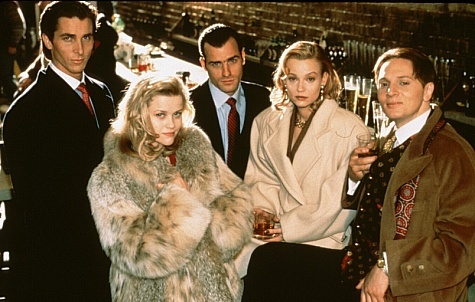
Living the American nightmare: Exploring the representation of the American dream in film
Written by: Bianca Garner, CC2K Staff Writer
For many, the “American dream” exists as an unattainable goal leading to riches, happiness, and a resolution to all our questions. The truth of the matter is the American dream means a great many things to different people. For one, it can mean success in love. For someone else, it might be wealth beyond their wildest imagination. Still others see it as the freedom to live life outside the confines of society and rules. Over time, the dream has developed as a part of the American myth, leading many historians to discuss how the idea is not only deeply rooted in the motivation of the founding fathers, but articulated in the founding texts of the United States. It only seems natural that these ideas would filter into Hollywood cinema.
Film has existed as a way for us to catalog the changing values and norms of society. However, the American dream remains constant. The term first appears thanks to American historian James Truslow Adams in his 1931 book “The Epic of America.” America found itself trapped in the Great Depression that year, with much of the country still reeling from the Wall Street Crash a few years earlier. Adams uses the term to describe the set of complex beliefs, religious promises, and the political and social expectations existing to uphold American traditions; elements he believed could give people focus, as well as something to strive for during the troubling years of the depression.

“Rags to riches” is an age old tale spanning decades of story-telling. Films like Pretty Woman, Rocky and Maid in Manhattan examine this in some form, showing that anyone can become “somebody” if you chase after the American dream.
These three films show the most hardworking and moral citizens achieve upward mobility. However, even in these, the story values the moral high ground over the achievement of economic success through immoral means. In Maid in Manhattan, Marisa (Jennifer Lopez) is a maid who accidentally falls in love with a senate candidate (Ralph Fiennes). In a case of mistaken identity, she passes as a hotel guest while trying on a Dolce & Gabbana coat. Marisa obtains the dream by “borrowing” someone else’s identity, promoting a troubling “fake it til we make it” mentality.
Pretty Woman is far more problematic. The now classic romance shows even hookers can have a Cinderella story, which is often a far cry from reality. The film ignores the issues that sex workers face on a daily basis. It would seem that in order to obtain their share of the American dream, women must sacrifice their own identity and pass as someone else.
Contemporary viewership meets the notion of this with skepticism and heavy criticism. Since the 1970s, worsening economic conditions and a decreasing quality of life for lower and middle-class Americans made achieving the American dream more difficult. It is only in recent years that large numbers of Americans began to question the idea seriously. According to a report from Generation Opportunity, the millennial generation no longer believes in the concept of the American dream. In fact, there are more young people today making less than $25,000 a year than there were in the 1990s.

In the last couple of decades, filmmakers started questioning the concept and what it truly represents. Recently, the excellent documentary Generation Wealth helped reestablish the nightmare that is the American dream. Directed by Lauren Greenfield, the film examines our societal obsession with status, wealth and fame as these ideals become more unattainable with each passing year.
The documentary tells the stories of various eccentric individuals who all share the same goal: obtaining their piece of the American dream and reveals that our definition of it has now changed. It’s less about being comfortable and content with life and has more to do with excess. Generation Wealth is eye-opening and disturbing to say the least. Particularly troubling is Greenfield’s examination of lower-middle and working class individuals, and the mountains of debt they build in order to be seen as “wealthy.” We see just how warped the concept of the American dream is; the lives of these people are not to be admired. They are sad and deeply unhappy creatures and their quest for wealth and status has brought them nothing but misery.

It isn’t just documentaries like Generation Wealth which discuss the ugly side of the American dream. Films like American Psycho, American Beauty, Fight Club and Wolf of Wall Street, each share a similar exploration of the toxicity and masculinity (something which seems to go hand-in-hand) with the American dream.
On the surface, Patrick Bateman (Christian Bale) in American Psycho seems to have it all. In reality, he loses his mind in the real emptiness of his life. in American Beauty, Lester (Kevin Spacey) rejects the American dream in order to seek pleasure from a simpler life. Ironically, his quest for simplicity backfires and costs him his life. Similarly, the men of Fight Club reject these ideas, choosing to fight back against capitalist America. Their pursuit of the American dream leads them nowhere, resulting in a crisis of identity.
All these films portray the United States as money-oriented, neglecting the humane side of life. The pursuit of the American dream is represented as something which corrupts us all. We are not meant to admire the protagonists in American Psycho or American Beauty, but we are meant to admire those in films like Pretty Woman and Maid in Manhattan. Interestingly, we are seeing fewer films idolizing these ideals, perhaps indicating that we have finally woken up. The American dream and the ideals it represents may be a thing of the distant past, and hopefully if the films have taught us anything, it’s that we should follow our own dreams.
